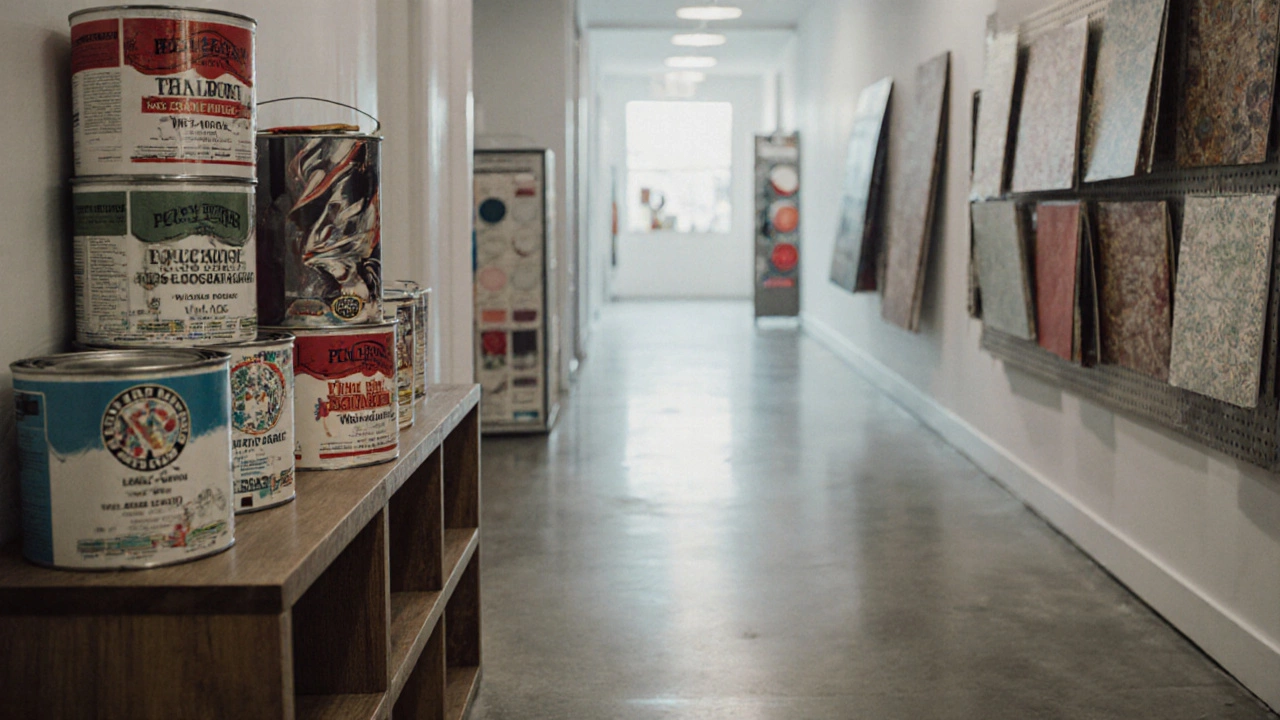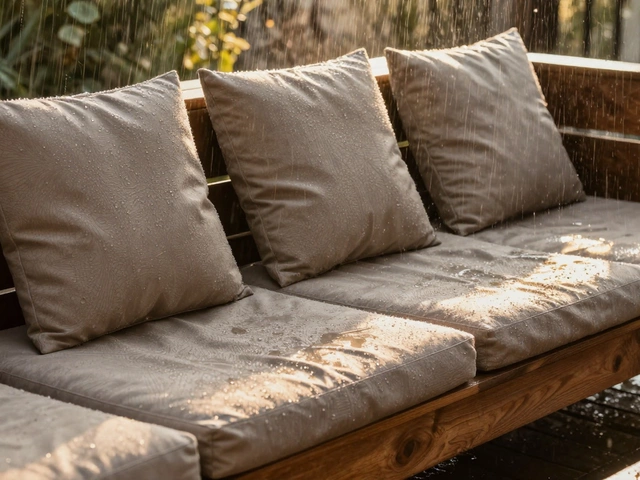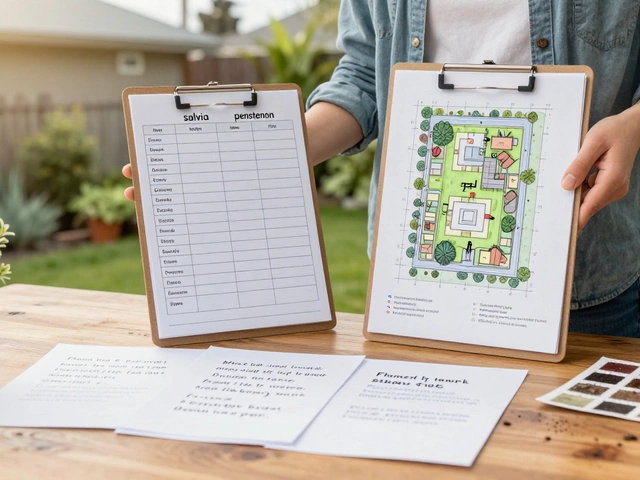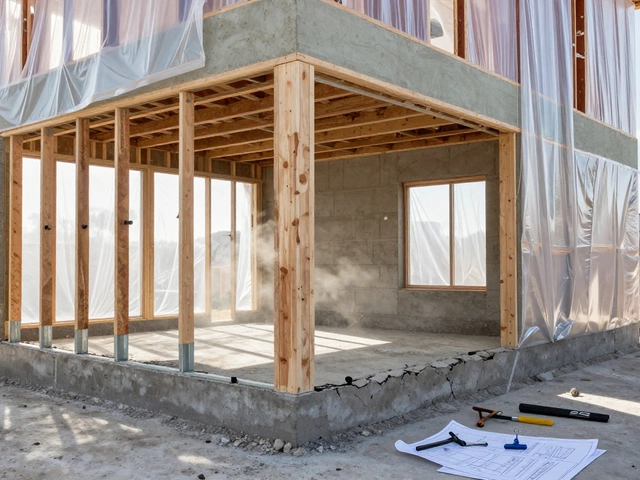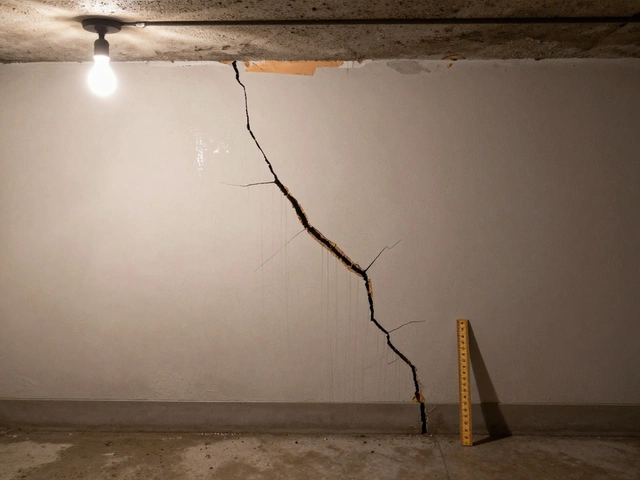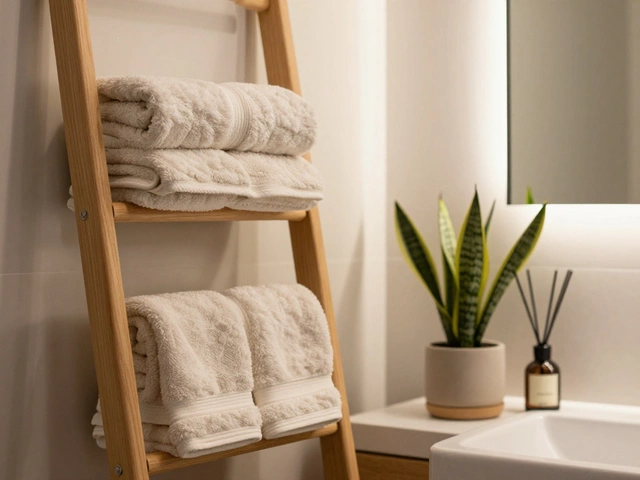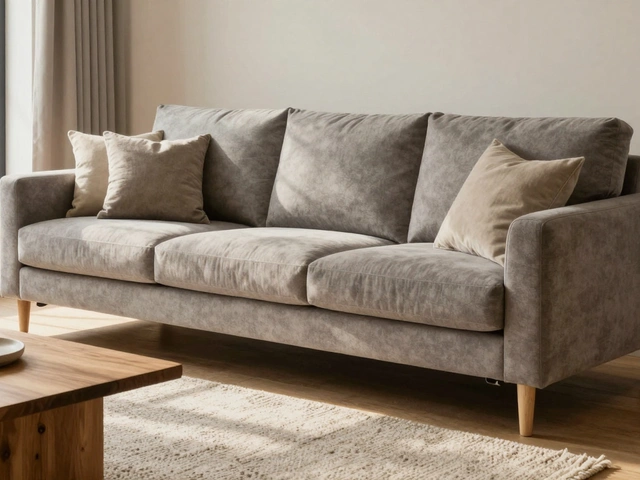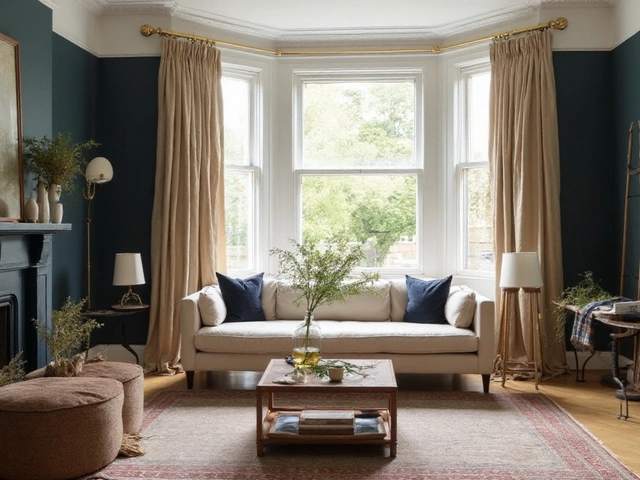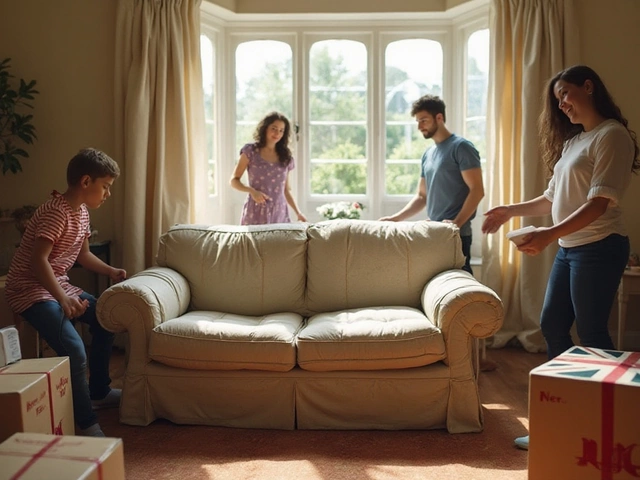Wall Finish Cost Calculator
Estimate Your Wall Finish Costs
Ever walked into a showroom and noticed fewer rolls of wallpaper on the shelves? You’re not alone-many homeowners wonder why this classic wall covering has all but vanished from mainstream design. Below we unpack the forces that pushed wallpaper out of the spotlight, explore what’s taken its place, and help you decide if the old‑school option still belongs in your home.
Quick Takeaways
- Rising labor costs and DIY culture made paint and peel‑and‑stick alternatives cheaper and faster.
- Environmental concerns shifted demand toward low‑VOC paints and recyclable wallcoverings.
- Digital printing now offers custom designs that outperform traditional wallpaper in cost and flexibility.
- Luxury markets still use high‑end wallpaper for texture and acoustics, but it’s a niche rather than the norm.
- When choosing a wall finish, balance budget, installation skill, durability, and style preferences.
What Wallpaper Actually Is
Wallpaper is a decorative material-usually paper, vinyl, or fabric-that is pasted onto walls to add pattern, color, or texture. Its roots trace back to 16th‑century Europe, where hand‑printed designs adorned aristocratic chambers. Modern wallpaper evolved with mass‑production in the 20thcentury, offering endless styles from floral damasks to bold geometrics.
Why Its Popularity Declined
Several trends converged in the 2010s and 2020s that made wallpaper feel outdated for the average homeowner.
- Installation headaches: Applying wallpaper requires precise measurement, surface preparation, and a steady hand. Mistakes mean costly re‑starts.
- Rising labor costs: Professional installers began charging $3-$5 per square foot, cutting into the perceived savings of a DIY project.
- DIY culture and quick fixes: Paints that dry in hours and peel‑and‑stick wallcoverings that can be applied with a single hand became the go‑to solutions for millennials moving into first homes.
- Environmental awareness: Traditional vinyl wallpapers contain PVC and phthalates, raising health concerns. Eco‑conscious buyers gravitated toward low‑VOC paints and recycled paper options.
- Design flexibility: Digital printing now enables custom murals and on‑demand textures at a fraction of the cost, reducing the need for fixed‑pattern rolls.
- Real‑estate market pressure: Staging homes for sale favors neutral, easy‑to‑refresh finishes. Paint colors can be changed instantly, while wallpaper changes often require full removal.
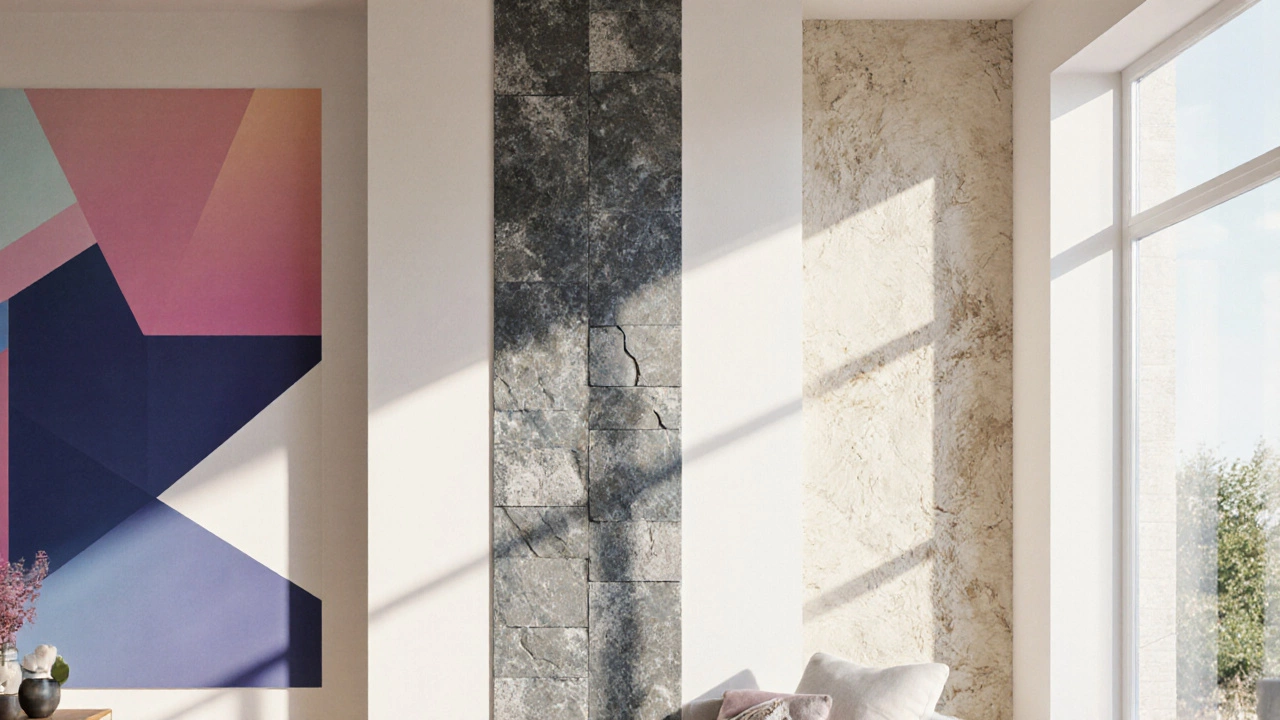
Modern Alternatives Shaking Up the Market
To understand why wallpaper fell out of favor, look at its main competitors.
Paint is a liquid coating applied to walls that creates a uniform color and can include low‑VOC formulations for better indoor air quality. Advances in “smart” paint-like washable, stain‑resistant, and even odor‑neutralizing varieties-make it a versatile choice.
Vinyl wall panels are interlocking sheets made from durable PVC that mimic wood, stone, or metal without the mess of traditional tile work. They’re water‑resistant, easy to install, and popular in bathrooms and kitchens.
Digital wallcoverings are custom‑printed films that can reproduce any image or pattern, often with peel‑and‑stick backing for simple DIY. Because they’re printed on demand, designers can offer one‑off artwork without the inventory costs of roll‑based wallpaper.
Textured wall finishes such as venetian plaster, grasscloth, or faux‑brick panels provide depth and tactile interest without the need for traditional wallpaper. They’re especially appealing in modern lofts where a raw, organic look is prized.
Is Wallpaper Dead? Niche Uses That Keep It Alive
Even if mainstream adoption drops, wallpaper isn’t completely extinct. High‑end designers still use it for three main reasons:
- Acoustic performance: Thick, fabric‑backed wallpaper can dampen echo in large open spaces.
- Luxury aesthetics: Hand‑painted silk or hand‑woven grasscloth adds a tactile richness that paint can’t replicate.
- Brand storytelling: Boutique hotels often commission custom murals as a signature visual element.
These applications target affluent clients who value craftsmanship over cost.
Choosing the Right Wall Finish for Your Home
When you stand in front of a blank wall, ask yourself these practical questions before picking a finish.
- What’s your budget? Paint is typically $0.50-$1 per square foot, while premium wallpaper can exceed $10 per square foot.
- How much time can you invest? DIY paint jobs can be completed in a weekend; wallpaper may take several days.
- Do you need durability? Bathrooms and high‑traffic hallways benefit from vinyl panels or washable paint.
- Is sustainability a priority? Look for FSC‑certified paper wallpaper or zero‑VOC paints.
- What style do you crave? For bold pattern repeats, digital wallcoverings give you unlimited design freedom.
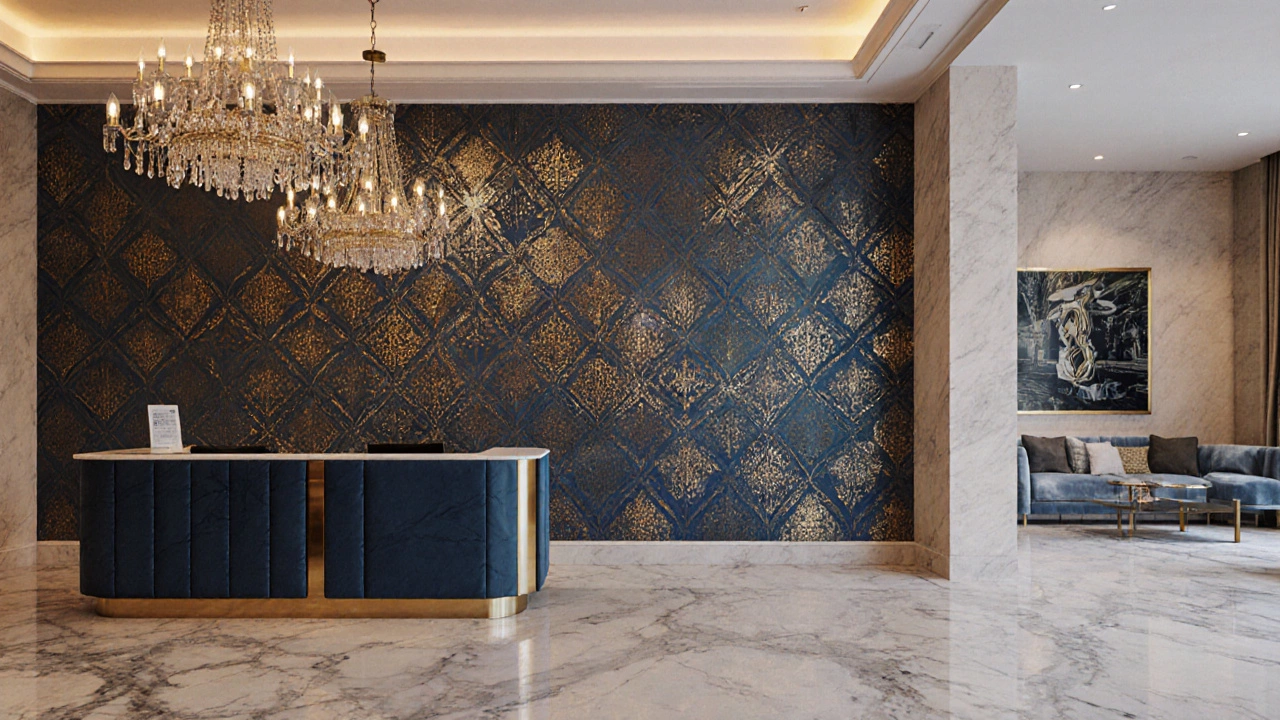
Side‑by‑Side Comparison
| Finish | Cost (persqft) | Installation time | Durability | Eco‑friendliness |
|---|---|---|---|---|
| Wallpaper | $2-$10 | 1-3days (pro) | Moderate - can tear at seams | Varies - recycled paper options exist |
| Paint | $0.50-$1 | 4-6hours | High - washable, scrub‑resistant | High - low‑VOC, water‑based |
| Vinyl panels | $5-$8 | 1day (DIY) | Very high - water‑resistant | Low - PVC content |
| Digital wallcoverings | $3-$7 | 2-4hours (peel‑and‑stick) | Moderate - can be replaced easily | Medium - paper‑based or eco‑vinyl |
How to Future‑Proof Your Walls
Design trends swing like a pendulum, but a few timeless strategies keep your walls looking fresh for years.
- Neutral base + accent: Paint a light neutral on most walls, then use a single accent wall with a bold digital print or textured panel.
- Modular systems: Choose peel‑and‑stick or interlocking panels that can be swapped out without demolition.
- Sample first: Live‑sample a small patch of any finish for at least a week; watch for wear, odor, or color shift.
By treating your walls as a canvas rather than a permanent commitment, you stay flexible as wallpaper trends evolve.
Frequently Asked Questions
Is wallpaper harder to remove than paint?
Generally, yes. Traditional wallpaper adheres with strong paste, requiring a scoring tool and chemical remover. Peel‑and‑stick versions are easier, but still leave a thin backing that may need gentle scraping.
Can I use wallpaper in a bathroom?
Only if the product is specifically labeled as moisture‑resistant or vinyl‑based. Regular paper wallpaper will bubble and peel when exposed to steam.
What’s the most eco‑friendly wall covering?
Recycled‑paper wallpaper with soy‑based inks scores high on sustainability, followed by low‑VOC paints made from water‑based polymers.
How long does wallpaper typically last?
Quality interior wallpaper can endure 10-15 years if kept away from moisture and heavy wear. High‑traffic areas may need earlier replacement.
Are there cheap alternatives that mimic wallpaper texture?
Peel‑and‑stick vinyl sheets or textured paint additives can give a similar depth without the cost of traditional rolls.
Do interior designers still recommend wallpaper?
Yes, but only for accent walls, acoustic panels, or luxury projects where the visual impact outweighs the higher expense.
